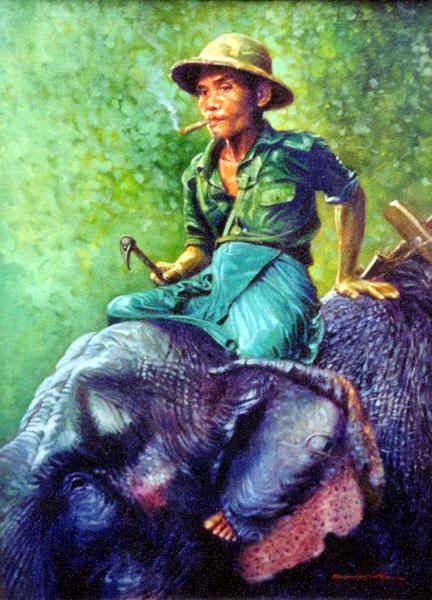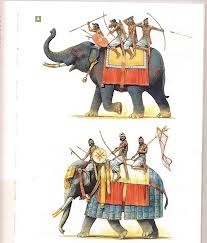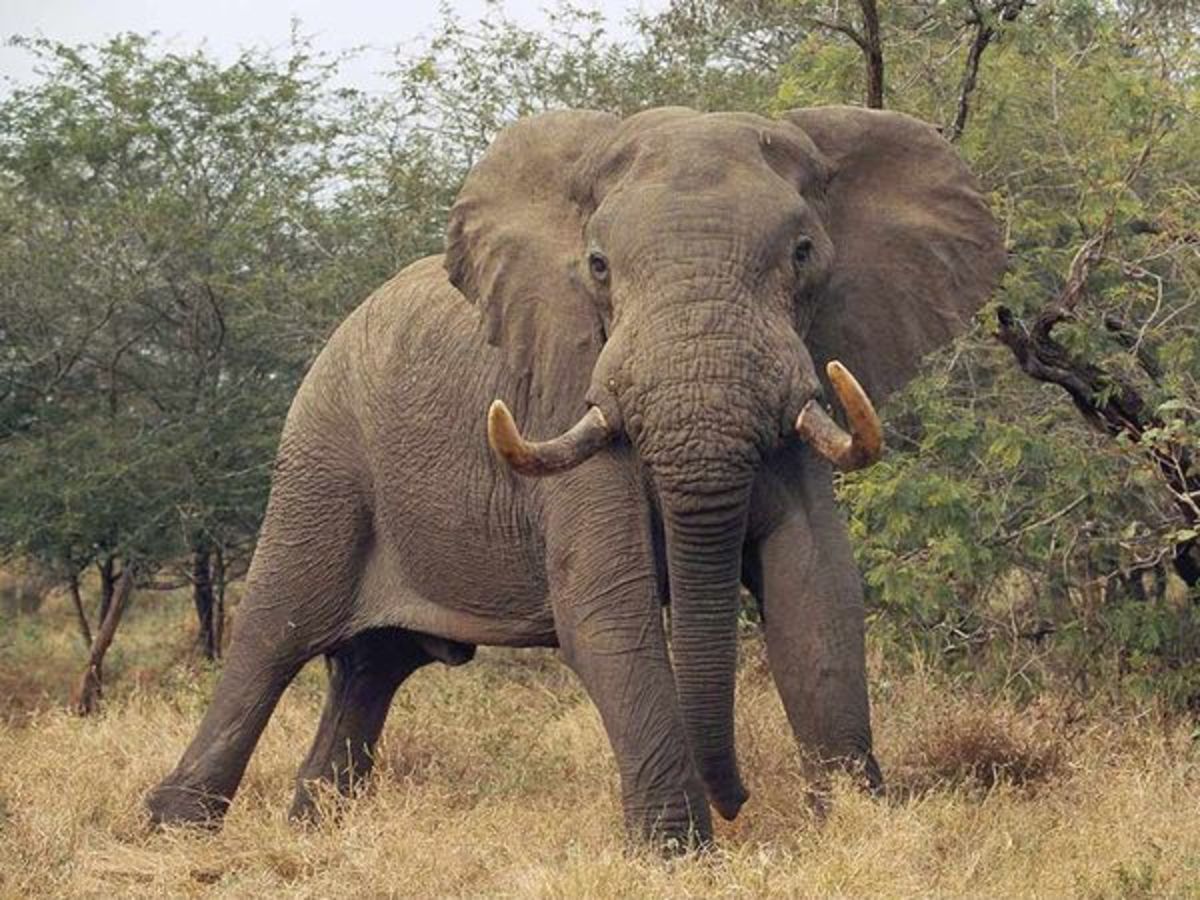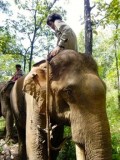How to Be a Mahout-Elephant Driver
How to Be a Mahout-Elephant Driver

How to Be a Mahout-Elephant Driver

How to Be a Mahout-Elephant Driver

Elephants have been used for war in the past. In modern times they are trained to work. You may not need to use the ability to drive an elephant anytime soon. Then again with the economy crisis you never know.
About Elephants
An elephant can consume way up to 50 gallons (190 liters) or more of water a day, along with the 500 to 600 pounds (some 225 to 270 kilos) of food. If the trunk becomes damaged, as in a poacher’s snare, the animal has a real survival problem. Some elephants with such a handicap have been seen eating grass on their knees.
Enormous Teeth and Tusks
Chewing these immense amounts of food calls for something unusual in the way of teeth. Strangely, only one tooth on each side of each jaw—a total of four—is in use at any one time. They may weigh eight or nine pounds (4 kilos) apiece and be at least a foot (30 centimeters) long. In a lifetime, six sets of these giant molars are used up, in addition to the first milk teeth.
The last set comes in when elephants are about forty years old. When these finally wear down, the great creature loses his chewing power and eventually dies, apparently from a form of malnutrition, at sixty or seventy years of age.
However, elephants are most noted for their other, far more visible, “teeth.” Their great tusks are actually the upper front incisors. They are the longest and heaviest teeth of any living animal. Since they continue to grow all through the elephant’s life, it has been estimated that their length could reach as much as sixteen feet (5 meters) in the female and twenty feet (6 meters) in the male.
They use their tusk to dig up soil in quest of salt or food and water, lift heavy weights, or are used to fight for the attention of a comely cow. One tusk bears the marks of more wear and may even be shorter due to chipping and breaking. We might, therefore, think of a right- or left-“handed” elephant.
When he died at fifty-five years of age in 1974, Ahmed, the largest known bull elephant in Kenya, had tusks each weighing an estimated 148 pounds (67 kilos). Ahmed’s giant incisors would be worth upward of $10,000 on the ivory market; so it can be readily understood why he was protected by a special decree of Kenya’s president.
How to Be a Mahout-Elephant Driver
How to Be a Mahout-Elephant Driver
Growing Up
As young male elephants get older, they do not become fearless protectors of the herd, as you might be inclined to think. Instead, the young bulls generally remain only until they begin to show signs of asserting their “masculinity” in some obstreperous manner. When this occurs, usually at around ten to thirteen years of age, the herd’s females react by forcibly ejecting the youthful upstarts. The young bulls then go off into a somewhat bachelor-type existence, though they may congregate in smaller bull herds. Mingling with cows comes only when they have “amorous” intentions toward the ones ready to mate.
As you may have guessed, main herds are largely a matriarchal society, usually led by a cow related to every other member of the herd as mother, sister or aunt. The strong bond between the cows cements the herds and makes for survival of the young.
When an African elephant reaches full growth, it is impressive indeed, the world’s largest living land animal. African bulls stand an average of over eleven feet (3 1⁄2 meters) high at the shoulder and weigh about seven tons. However, one African bull killed in 1955 stood over thirteen feet (4 meters) high and was said to weigh twelve tons—a real giant!
How to Be a Mahout-Elephant Driver
Mahout Intensive Training
As a mahout you need intensive training a minimum of three months. You have to be Intelligent, devoted, vigorous, and firm. You will need the fallowing: An elephant, treats, water, stick, and wide open space.
Calves are better to train than adult elephants. Training starts in their teens. When they are 25 years old they start to work and are retired by 65. Doesn't it sound familiar.
There are three ways to drive one, three styles of gait, three methods of sitting in front and five to sit behind, six ways of wielding the hook, mounting is done in eight ways and there are about ten ways to dismount an elephant.
How to Be a Mahout-Elephant Driver
Trust
Your elephant must trust you and recognize your voice. You accomplish this by feeding and bathing the elephant.
You must learn 20 different commands. With a stick you show the elephant what needs to be done just like you do a dog. If he obeyed the command you give him a treat. Within 3 or 4 years the elephant will understand all the commands.
After the elephant learns verbal commands the driver needs to sit on him and teach him physical commands. For example; to make him walk forward you press both big toes behind his ears. If you press your heels on his shoulders he will back up.
As a Mahout you do not abuse your elephant verbally or with a stick... You will be run over. If the elephant is sold and a new mahout takes over it will become agitated and hard to control.









